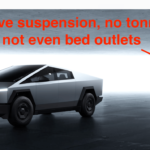Understanding the Complexities of ZEV Mandates and CO2 Performance for Car Makers
Car makers are navigating a complex landscape when it comes to meeting ZEV mandates and offsetting them with CO2 performance. While specific figures are not publicly disclosed, it is estimated that some car makers have ZEV mandate figures as low as 8%, with more typical numbers falling in the range of 18-20%.
Once a car maker receives its ZEV mandate figure based on 2021 data, it is locked in for three years. The gap between the mandated EV figure and the actual performance must be maintained each year.
Car makers have the option to trade between ZEV mandates and CO2 requirements. Overperformance on the ZEV mandate can earn credits for CO2 compliance, allowing manufacturers to potentially sell combustion cars under certain conditions. These credits must be utilized within three years.
While trading CO2 credits for ZEV compliance is possible, ZEV is considered the dominant aspect of the legislation. Overperforming on CO2 reduction can reduce a manufacturer’s ZEV target, but there are caps in place for each year.
In the event that a manufacturer falls short of its ZEV target, a penalty of £15,000 per car sold below the target is imposed. This penalty is based on the cost difference between building an ICE car and a ZEV, as well as excess CO2 emissions.
Manufacturers also have the option to buy credits from other companies that have overperformed on the ZEV mandate. Companies like JLR have publicly stated their intention to buy credits for compliance. The going rate for credits is capped at £14,999.99.






